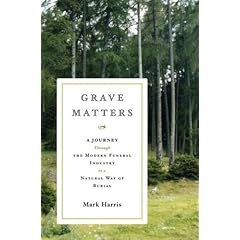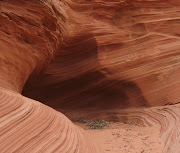 Best way to think of it as the Circle of Life is a green cycle or reduce, recycle and reuse. A full
Best way to think of it as the Circle of Life is a green cycle or reduce, recycle and reuse. A full  commitment to the environment should not just involve Earthly actions, but
commitment to the environment should not just involve Earthly actions, but  the final celebratory exit according to cradle to grave eco supporters. Getting married is a style choice throughout the environmental preservation process from sending 100% PCW recycled invites to giving saplings as wedding favors and purchasing carbon credits for the wedding itself and all of the guests or purchasing a vintage dress plus tuxedo or buying a biodegradable hemp one to ensuring free range chicken is locally procured and everybody stays in the same locale for the nuptials and the party. Giving birth is a tad more complicated, but bouncing boy or girl can be cosseted in 100% organic clothing, get breastfed and use boatloads of cloth diapers that are hung out to dry in the free sunshine for all your neighbors to judge your handiwork.
the final celebratory exit according to cradle to grave eco supporters. Getting married is a style choice throughout the environmental preservation process from sending 100% PCW recycled invites to giving saplings as wedding favors and purchasing carbon credits for the wedding itself and all of the guests or purchasing a vintage dress plus tuxedo or buying a biodegradable hemp one to ensuring free range chicken is locally procured and everybody stays in the same locale for the nuptials and the party. Giving birth is a tad more complicated, but bouncing boy or girl can be cosseted in 100% organic clothing, get breastfed and use boatloads of cloth diapers that are hung out to dry in the free sunshine for all your neighbors to judge your handiwork.Some people think Death is the finale while others believe it is Nearer thy God for Thee. In all cases, the environment is now
 becoming a considerable or even a primary factor in planning and producing a ceremony befitting most major life choices or the Final One. Ashes to Ashes, dust to Dust takes on a long lasting impact when viewing the final choices. According to the Casket & Funeral Association of America and the Cremation Association et al, 3o million board feet of hardwoods, 2700 tons of copper and bronze plus over 90,000 tons of steel are used for caskets to put into vaults comprised of 1.636 tons of reinforced concrete. Just in the US, over 827,000 gallons of embalming fluid flows annually, which sometimes seeps back into the ground and water tables.
becoming a considerable or even a primary factor in planning and producing a ceremony befitting most major life choices or the Final One. Ashes to Ashes, dust to Dust takes on a long lasting impact when viewing the final choices. According to the Casket & Funeral Association of America and the Cremation Association et al, 3o million board feet of hardwoods, 2700 tons of copper and bronze plus over 90,000 tons of steel are used for caskets to put into vaults comprised of 1.636 tons of reinforced concrete. Just in the US, over 827,000 gallons of embalming fluid flows annually, which sometimes seeps back into the ground and water tables.For a concept aimed at saving
the Earth by going back to basics, an eco-funeral can be more complicated than it
sounds. The Natural Death Center provides a handbook that suggests environmental targets for cemeteries.In a green funeral, bodies are not embalmed and are dressed in pure fiber clothes. Green
campaigners say refrigeration or dry ice is a good alternative to formaldehyde, which can seep into the water system.
One visitor, Linda McDowall, admired another coffin bundled in a beige, leaf-adorned felt shroud, saying it looked comfortable.
"Cozy and warm are not words you associate with death," said McDowall, a 48-year-old German and French translator.
Cardboard coffins — which are as thick as their wooden counterparts — can be decorated by family and biodegrade within three months.
"The trouble is, they are a bit ungainly to use," said Oakfield Wood burial ground director Oliver Peacock. "They're not terribly easy to handle and if it's wet, they don't look their best either."
 Heavy resource depletions for marking graves are cause for permanent frowns such as marble headstones. Some final resting places offer wooden memorial markers and plant a tree. For those increasingly choosing the cremation option, the type of urns available address environmental concerns too. Real estate costs continue to escalate and proximity to urban areas is part of the calculus on building the green funeral market. With 80 percent choosing the fiery Valhalla exit, Canada is seeing a rapid rise in green funeral interest in British Columbia and Ontario.
Heavy resource depletions for marking graves are cause for permanent frowns such as marble headstones. Some final resting places offer wooden memorial markers and plant a tree. For those increasingly choosing the cremation option, the type of urns available address environmental concerns too. Real estate costs continue to escalate and proximity to urban areas is part of the calculus on building the green funeral market. With 80 percent choosing the fiery Valhalla exit, Canada is seeing a rapid rise in green funeral interest in British Columbia and Ontario.The Natural Burial Co-operative is trying to take the idea a
step further in Paisley, Ont., a village about 200 kilometres northwest of Toronto, by starting a burial site that will solely focus on green funerals and resemble a conservation area more than a cemetery.
Trees would be planted at grave sites
and people could pay their respects to loved ones in a serene, green environment, rather than being surrounded by rows of gloomy tombstones, said president Mike Salisbury.
"One of the key ideas of natural burial is this idea that your funeral can be a tool for landscape conservation," he said. "I think what gets people really excited is the idea that they're actually creating an environment through their purchase of a plot."
 There are many natural preserves sprouting up in North America and parts of Europe. Britain leads the world in eco funerals. Of course, the Native Peoples of America had this concept down cold from the start. The wonderfully reviewd book, Grave Matters: A Journey Through The Modern Funeral Industry to A Natural Way of Burial authored by Mark Harris gives comfort and squeamish insights into the entire process and perspective of leaving the earth green and loved ones with a measure more of Peace.
There are many natural preserves sprouting up in North America and parts of Europe. Britain leads the world in eco funerals. Of course, the Native Peoples of America had this concept down cold from the start. The wonderfully reviewd book, Grave Matters: A Journey Through The Modern Funeral Industry to A Natural Way of Burial authored by Mark Harris gives comfort and squeamish insights into the entire process and perspective of leaving the earth green and loved ones with a measure more of Peace.










No comments:
Post a Comment